Noticiasarquelogicasjaponesas - Arqueólogo Y Japonólogo En Proceso.










More Posts from Noticiasarquelogicasjaponesas and Others
El origen de un país y su prehistoria, un paseo por la historia del país del sol naciente. /国の成り立ちと先史、日出ずる国の歴史を歩く。/The origin of a country and its prehistory, a walk through the history of the country of the rising sun.
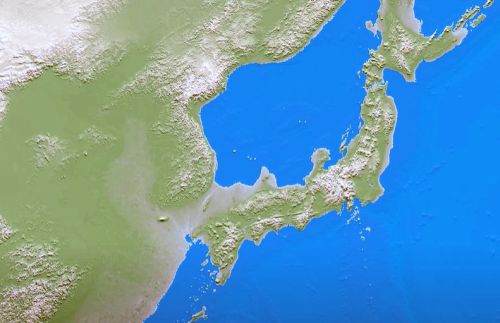



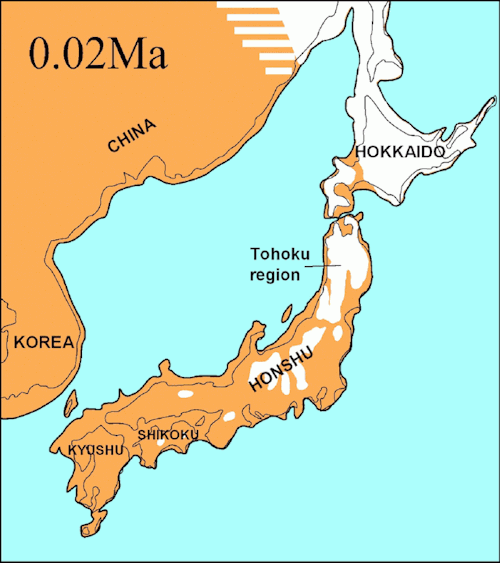

Sean bienvenidos, japonistasarqueológicos, a una nueva entrega de arqueología nipona e historia nipona, una vez dicho esto pónganse cómodos qué empezamos.
-
En los capítulos 1,2,3:Hablamos de: ¿Cuándo llegaron por primera vez los homínidos a Japón? ¿De qué vivían? Hablamos un poco de su geografía, de las cuatro eras glaciales, también se mencionó el holoceno. Empezamos a hablar del pleistoceno, y de cuando empezó la prehistoria de hace 2,5 (esta fecha está desfasada actualmente ronda 4 millones, por los hallazgos de industria lítica) a 7 millones de años. Comentamos algunos homínidos: Homo neanderthalensis, Homo heidelbergensis, homo ergaster entre otros homínidos, comentamos como África es la cuna de la humanidad, y su diversidad de dispersiones migratorias. También se comentó la llegada los homínidos a Okinawa hace 30.000-40.000 años y los Ainus como posibles primeros pobladores. Seguimos hablando del pleistoceno, estuvimos explicando un poco sobre el pleistoceno, se mencionó un poco la formación del archipiélago, mencioné mi posible teoría y al final terminamos con ¿Cómo se llaman las placas tectónicas que forman el archipiélago?
-
Espero que os guste y nos vemos en próximas publicaciones, que pasen una buena semana.
-
日本の考古学者諸君、ようこそ、日本考古学と日本史の新連載へ!さあ、くつろいで、始めよう。
第1章、第2章、第3章では、「ヒト科の動物はいつ日本にやってきたのか?地理、4つの氷河期、完新世についても少し触れました。更新世について話し始め、先史時代が始まった250万年前(この年代は、石器産業の発見により、現在では約400万年古くなっている)から700万年前について話した。ホモ・ネアンデルターレンシス、ホモ・ハイデルベルゲンシス、ホモ・エルガスターなどのホミノイドについて解説し、アフリカが人類発祥の地であること、その移動分散の多様性について述べた。また、3万~4万年前の沖縄へのヒト科動物の到着と、最初の入植者である可能性のあるアイヌ人についても議論した。私たちは更新世について話を続け、列島の形成について少し説明し、私が可能性のある説を述べ、最後にこう締めくくった。 列島を形成しているプレートの名前は?
それではまた、良い一週間を。
-
Welcome, Japanese archaeologists, to a new instalment of Japanese archaeology and Japanese history, so make yourselves comfortable and let's get started.
In chapters 1,2,3:We talk about: When did hominids first arrive in Japan? What did they live on? We talked a little bit about their geography, the four ice ages, the Holocene was also mentioned. We started talking about the Pleistocene, and when prehistory began from 2.5 (this date is now out of date by about 4 million years ago, due to the findings of lithic industry) to 7 million years ago. We commented on some hominids: Homo neanderthalensis, Homo heidelbergensis, homo ergaster among other hominids, we commented on how Africa is the cradle of humanity, and its diversity of migratory dispersions. We also discussed the arrival of hominids in Okinawa 30,000-40,000 years ago and the Ainus as possible first settlers. We continued talking about the Pleistocene, we were explaining a bit about the Pleistocene, the formation of the archipelago was mentioned a bit, I mentioned my possible theory and at the end we finished with What are the names of the tectonic plates that form the archipelago?
I hope you like it and see you in future posts, have a nice week.

Sean bienvenidos, japonistasarqueológicos a una nueva entrega, en esta ocasión haré una introducción a que es la arqueología asistida a la arquitectura, una vez dicho esto pónganse cómodos que empezamos. - La arqueología, abarca muchos campos de estudios y épocas, desde la prehistoria hasta nuestro día, pero no estudia dinosaurios, lo siento, de eso se encarga la paleontología. En este caso, ¿Qué entendemos por Arqueología aplicada a la arquitectura?: pues atravez de sus restos arqueológicos nos permiten saber como eran las distintas arquitecturas de las distintas épocas. Por ejemplo: la arquitectura greco-romana y de la era vikinga, pero en este caso nos trasladamos al país del sol naciente y para que lo puedan entender mejor pongamos algunos ejemplos como las pagodas o edificios budistas e incluso casas de tipo foso en el periodo Jomon, solo por mencionar algunas cosas. - Gracias a esta disciplina y si la combinamos con la Arqueología 3D, pues el resultado es que con recreaciones virtuales o con la arqueología experimental nos permiten entender como se llevaron a cabo la labor de construcción y de abandono, etc. - Espero que os guste y nos vemos en próximas publicaciones, que pasen una buena semana. - Welcome, Japanese archaeologists to a new installment, this time I will make an introduction to what assisted archeology is to architecture, once said this, make yourself comfortable and let's start. - Archeology covers many fields of study and times, from prehistory to the present day, but it does not study dinosaurs, sorry, paleontology takes care of that. In this case, what do we understand by Archeology applied to architecture? Well, through its archaeological remains they allow us to know what the different architectures of the different eras were like. For example: Greco-Roman architecture and the Viking era, but in this case we move to the country of the rising sun and so that they can understand it better, let's give some examples such as pagodas or Buddhist buildings and even moat-type houses in the period Jomon, just to mention a few things. - Thanks to this discipline and if we combine it with 3D Archaeology, the result is that with virtual recreations or with experimental archeology they allow us to understand how the construction and abandonment work was carried out, etc. - I hope you like it and see you in future publications, have a good week. - 日本の考古学者の皆さん、新しい記事へようこそ。今回は、建築に対する考古学支援とは何かについて紹介します。これを言ったら、安心して始めましょう。 - 考古学は先史時代から現代に至るまで、多くの研究分野と時代をカバーしますが、恐竜については研究しません。申し訳ありませんが、古生物学がそれを担当します。 この場合、考古学を建築に適用すると、私たちは何を理解できるのでしょうか? そうですね、考古学的遺跡を通じて、さまざまな時代のさまざまな建築がどのようなものであったかを知ることができます。 例: ギリシャ・ローマ建築とバイキング時代。この場合は日出ずる国に移ります。理解が深まるように、塔や仏教の建物、さらには堀型の家などの例を挙げましょう。縄文時代のことについて少しだけ触れておきます。 - この専門分野のおかげで、これを 3D 考古学と組み合わせると、仮想レクリエーションや実験考古学を使用して、建設や放棄作業がどのように行われたのかなどを理解できるようになります。 - 気に入っていただければ幸いです。今後の出版物でお会いできることを願っています。良い一週間をお過ごしください。

Welcome to this new series which we will cooperate with @garupan_fan.katyusya and with that said let's start. - What is a samurai? He was a warrior of the 8th century, in his origins they used the bow and not the katana, later they will use other weapons and combat techniques. In this post we are going to focus on the following characters: Mitsuhide, Toshimitsu Saito and Hideyoshi Mideyashi. - Mitsuhide is known to finish off Oda Nobunaga, Mitsuhide would eventually be killed by Hideyoshi Mideyashi. Who was Toshimitsu? He was the main vassal of the Akechi family and father of Kasuya. Saito died on June 17, 1582, his origin and year of birth are unknown. Mitsuhide would kill Oda Nobunaga after the Yamazuki battle. - I hope you liked it and see you in future publications on Japanese history, archeology and geography, among other topics. Have a good week. - @garupan_fan.katyusya と協力するこの新しいシリーズへようこそ。 - サムライとは? 彼は 8 世紀の戦士であり、彼の起源では刀ではなく弓を使用していましたが、後に他の武器や戦闘技術を使用するようになります。 この投稿では、光秀、斎藤利光、御堂筋秀吉の登場人物に焦点を当てます。 - 光秀は織田信長を始末したことで知られており、光秀は最終的には御出吉に殺されます。 利光って誰? 明智家の重臣で粕谷の父。 斉藤は1582年6月17日に亡くなったが、彼の出自と生年は不明である。 山崎合戦の後、光秀は織田信長を討ちます。 - 日本の歴史、考古学、地理学などの今後の出版物でお会いしましょう。 よい一週間を
-
Bienvenidos a esta nueva serie en la que cooperaremos con @garupan_fan.katyus y dicho esto comencemos. - ¿Qué es un samurái? Fue un guerrero del siglo VIII, en sus orígenes usaban el arco y no la katana, posteriormente usarán otras armas y técnicas de combate. En este post nos vamos a centrar en los siguientes personajes: Mitsuhide, Toshimitsu Saito y Hideyoshi Mideyashi. - Se sabe que Mitsuhide acabó con Oda Nobunaga, Mitsuhide eventualmente sería asesinado por Hideyoshi Mideyashi. ¿Quién fue Toshimitsu? Fue el principal vasallo de la familia Akechi y padre de Kasuya. Saito murió el 17 de junio de 1582, se desconoce su origen y año de nacimiento. Mitsuhide mataría a Oda Nobunaga después de la batalla de Yamazuki. - Espero que os haya gustado y nos vemos en próximas publicaciones sobre historia, arqueología y geografía japonesas, entre otros temas. Ten una buena semana.

Sean bienvenidos japonesasarqueológicos a una nueva entrega arqueológica, en esta ocasión hablaremos de la primera moneda japonesa atrás vez de los restos Arqueológicos y de evidencias históricas dicho esto pónganse cómodos que empezamos. - ¿Cuándo surge la moneda en Japón? La primera moneda, oficialmente nace en el año 708 d.c llamada Wadokaichin, mientras tanto que en otros continentes del mundo como china o en el próximo oriente ya se habían creado la moneda y los primeros sistemas monetarios. ¿Qué había antes del 708 d.c? Pues había dos protomonedas una en el año 660 d.c. otra en el año 683, habían tomado como modelo la moneda china de 621 d.c - ¿Cómo se llamaban las dos monedas anteriores al siglo VIII d.c? Fuhonsen data del año 683 d.c y fue descubierta en 1998 Mumonginsen datada del año 660 d.c - La moneda Mumonginsen coincide con la leyenda de la fundación del estado japonés por el primer emperador Jinmu Tennō, según la historiografía moderna lo consideran un personaje ficticio hay que tener en cuenta que toda leyenda tiene una base real. - ¿Qué emperadores podemos encontrar en esta cronología según la historiografía y los restos arqueológicos? Los emperadores eran Tenji y Tenmu tennō. ¿Dónde fueron encontradas dichas monedas? fueron halladas en las ruinas de Asukaile en la prefectura de Nara en el pueblo de Asuka. - ¿Conocían estas monedas?¿Qué opinan ustedes al respecto? Espero que os haya gustado y nos vemos en la próxima publicación de arqueología nipona. - 日本の考古学者は新しい考古学の記事を歓迎します。今回は、考古学的遺跡や歴史的証拠の代わりに、最初の日本のコインについて話します。 - 日本ではいつ通貨が出現しますか?最初の通貨は、和同開珀と呼ばれる西暦708年に正式に誕生しましたが、中国や中東などの世界の他の大陸では、通貨と最初の通貨制度がすでに作成されていました。西暦708年以前は何がありましたか?ええと、2つのプロトコインがありました。1つは西暦660年にありました。別の683年に、彼らは621ADの中国の硬貨をモデルとして採用しました。 .- 8世紀以前の2枚の硬貨は何と呼ばれていましたか? 富本銭は西暦683年にさかのぼり、1998年に発見されました。 西暦660年のムモンギンセン ムモンギンセンの硬貨は、初代神武天皇による日本国家の建国の伝説と一致しており、現代の歴史学によれば、彼は架空の人物であると考えられており、すべての伝説には本当の根拠があることを考慮に入れる必要があります。 - 歴史学と考古学的遺跡によると、この年代学でどの皇帝を見つけることができますか?天武天皇は天武天皇と天武天皇でした。これらのコインはどこで見つかりましたか?奈良県のあすか町のあすかいれ廃墟で発見されました。 - これらのコインを知っていましたか?それについてどう思いますか?あなたがそれを気に入って、次の日本の考古学の出版物であなたに会えることを願っています。 - Japanese archaeologists are welcome to a new archaeological installment, this time we will talk about the first Japanese coin back instead of the Archaeological remains and historical evidence, having said that, make yourself comfortable, we begin. - When does currency emerge in Japan? The first currency was officially born in the year 708 AD called Wadokaichin, meanwhile in other continents of the world such as China or the Middle East the currency and the first monetary systems had already been created. What was there before 708 AD? Well, there were two proto-coins, one in the year 660 AD. another in the year 683, they had taken as a model the Chinese coin of 621 AD .- What were the two coins before the 8th century AD called? Fuhonsen dates back to 683 AD and was discovered in 1998. Mumonginsen dated to 660 AD The Mumonginsen coin coincides with the legend of the foundation of the Japanese state by the first emperor Jinmu Tennō, according to modern historiography they consider him a fictitious character, it must be taken into account that all legends have a real basis. - Which emperors can we find in this chronology according to historiography and archaeological remains? The emperors were Tenji and Tenmu tennō. Where were these coins found? They were found in the Asukaile Ruins in Nara Prefecture in the town of Asuka. - Did you know these coins? What do you think about it? I hope you liked it and see you in the next Japanese archeology publication.


Sean bienvenidos a una nueva noticia de Arqueológia Japónesa para ir empezando el año dicho esto empezamos. - Los restos arqueológicos datan del periodo Yayoi(IV-III) al kofun(250-592), Los restos arqueológicos fueron hallados en la ciudad de Munakata en la prefectura de fukuoka en la isla de Kyūshū los restos ya se conocían desde la década de los años 70 en 2020, se encontraron 18 edificios casa pozo. - También fue encontrado un Ishibuchi¿Qué era este artilugio? era una herramienta usada en el período Yayoi para cosechar el arroz. - Espero que os haya gustado y nos vemos en otra noticia de Arqueológia Japónesa un cordial saludo. - 日本の考古学の新しい作品へようこそ。私たちが始めたこの年から始まります。 - 遺跡は弥生時代(IV-III)から古墳(250-592)までさかのぼります。 九州の福岡県宗像市で遺跡が発見されました。2020年の70年代からすでに知られている遺跡で、18棟の井戸が発見されました。 - 石渕も発見されましたこの矛盾は何でしたか? 弥生時代に稲刈りに使われた道具でした。 - よろしくお願いします。また、日本の考古学の別の話で、心からの挨拶を交えてお会いしましょう。 - Welcome to a new piece of Japanese Archeology to start the year with this we started. - Welcome to a new piece of Japanese Archeology to start the year with this we started. - The archaeological remains date from the Yayoi period (IV-III) to Kofun (250-592), The archaeological remains were found in the city of Munakata in the prefecture of Fukuoka on the island of Kyūshū.The remains were already known since the decade of the 70s in 2020, 18 well house buildings were found. - An Ishibuchi was also found What was this contraption? It was a tool used in the Yayoi period to harvest rice. - I hope you liked it and see you in another Japanese Archeology story, with a cordial greeting.
Fuente/ source/ソース: https://munakata.keizai.biz/photoflash/23/


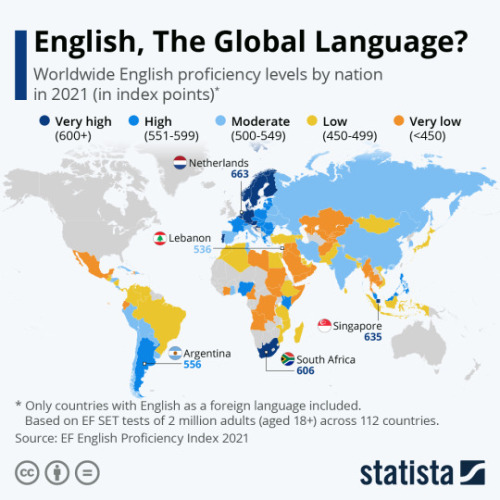
Parte 2:Razones por las que a los japoneses jamás se le va a dar bien el inglés: Sean bienvenidos, japonistasarqueológicos, a una nueva entrega, en esta ocasión hablamos del inglés en Japón, una vez dicho esto pónganse cómodos qué empezamos. - Por la que a los japoneses les cuesta el inglés más de una te sorprenderá, los japoneses para poder aprender inglés desde cero les lleva alrededor de 500 horas alcanzar el nivel principiante; sin embargo, se necesitan unas 250 horas para aprender coreano o indonesio al mismo nivel principiante. Una de las razones por las que los japoneses no son buenos en inglés es debido a la pronunciación, esto es un hecho. - La estructura gramatical del inglés es: SVO (sujeto-verbo-objeto) donde el verbo va primero, mientras que en japonés, SOV (Sujeto-Objeto-Verbo) donde el verbo va al final. Además, la estructura de las oraciones difiere entre el inglés y el japonés, el inglés es muy estricto en cuanto al orden de las palabras. En japonés utilizamos unas 120 palabras en un minuto de conversación normal. El inglés emplea aproximadamente 1,5 veces más palabras, razón por la cual los japoneses sienten que hablan inglés más rápido. Por ejemplo, la palabra japonesa “personalidad” tiene tres fonemas. Cuando se trata de inglés, necesitamos cinco fonemas: pa/so/na/li/ti, y para transmitir la misma información, necesitamos hablar más rápido. La razón por la que a los japoneses les resulta difícil escuchar y hablar inglés es probablemente porque se les exige que usen habilidades que normalmente no emplean. パート2:日本人が決して英語が得意にならない理由:日本の考古学者たちよ、新しい回へようこそ!今回は日本の英語について話す。 - なぜ日本人は英語が苦手なのか?日本人がゼロから英語を学んで初級レベルに達するには約500時間かかるが、韓国語やインドネシア語を学んで同じ初級レベルに達するには約250時間かかる。日本人が英語を苦手とする理由のひとつに発音があるが、これは事実である。 - 英語の文法構造はSVO(Subject-Verb-Object)で動詞が先に来るのに対し、日本語はSOV(Subject-Object-Verb)で動詞が最後に来る。また、文の構造も英語と日本語では異なり、英語は語順に非常に厳しい。日本語の場合、通常の会話で1分間に使う単語は約120語。英語はその約1.5倍の単語を使うので、日本人は英語を話すのが早いと感じるのです。例えば、日本語の「パーソナリティ」という単語には3つの音素がある。それが英語になると、パ/ソ/ナ/リ/ティの5つの音素が必要になり、同じ情報を伝えるためには、より速く話す必要がある。日本人が英語を聞くのも話すのも難しいと感じるのは、普段使わない能力を要求されるからだろう。 - 今後の記事でお会いできることを楽しみにしています。 Part 2: Reasons why the Japanese will never be good at English: Welcome, Japanese archaeologists, to a new instalment, this time we are talking about English in Japan, so make yourselves comfortable and let's get started. - Why the Japanese have a hard time with English more than one will surprise you, it takes the Japanese around 500 hours to learn English from scratch to reach beginner level; however, it takes around 250 hours to learn Korean or Indonesian to the same beginner level. One of the reasons why Japanese people are not good at English is because of pronunciation, this is a fact. - The grammatical structure of English is: SVO (Subject-Verb-Object) where the verb comes first, while in Japanese, SOV (Subject-Object-Verb) where the verb comes last. Also, sentence structure differs between English and Japanese, English is very strict about word order. In Japanese we use about 120 words in one minute of normal conversation. English uses about 1.5 times as many words, which is why Japanese people feel they speak English faster. For example, the Japanese word "personality" has three phonemes. When it comes to English, we need five phonemes: pa/so/na/li/ti, and to convey the same information, we need to speak faster. The reason why Japanese people find it difficult to listen to and speak English is probably because they are required to use skills they do not normally use. - I hope you like it and see you in future posts, have a good week.







Capitulo 1:ヨーロッパの雰囲気が漂う五稜郭/Goryokaku a hallmark with European airs.
-
Sean bienvenidos a una nueva entrega de cultura e historia japonesa, en este caso vamos a hablar sobre Goryokaku, localizado en Hakodate en la prefectura de Hokkaido al norte de la isla de Honshu.
-
Toponimia de Hokkaido en, el siglo XIX se llamaba Ezo, fue el último reducto del shogunato contra el nuevo orden creando una república (1868-1869). Hay que destacar que Japón estuvo cerrado al mundo durante 260 años de su historia (1603-1868), este periodo se le conoce como periodo Edo, bajo el régimen militar Tokugawa.
-
En 1854 finalizaron los tratados de amistad con Estados Unidos, Gran Bretaña, Rusia. Hakodate se convirtió en una ciudad portuaria abierta al mundo exterior y en 1858, concluyendo el tratado comercial y al año siguiente se convirtió en puerto comercial. Hisaburo Takeda, estudio en Europa y se formó en fortalezas tipo estrelladas de traza italiana, en 1864 se completaron las contribuciones de la fortaleza.
-
Espero que os guste y nos vemos en próximas publicaciones.
-
Welcome to a new installment of Japanese culture and history, in this case we are going to talk about Goryokaku, located in Hakodate in the Hokkaido prefecture north of the island of Honshu.
-
Toponymy of Hokkaido in the 19th century was called Ezo, the last stronghold of the shogunate against the new order creating a republic (1868-1869). It should be noted that Japan was closed to the world for 260 years (1603-1868), this period is known as the Edo period, under the Tokugawa military regime.
-
In 1854 the friendship treaties with the United States, Great Britain, and Russia ended. Hakodate became a port city open to the outside world and in 1858, concluding the commercial treaty and the following year it became a commercial port. Hisaburo Takeda, studied in Europe and trained in Italian star-type fortresses, in 1864 the contributions of the fortress were completed.
-
日本の文化と歴史の新しい記事へようこそ。今回は、本州の北、北海道の函館にある五稜郭について話します。
-
19 世紀の北海道の地名は蝦夷と呼ばれ、共和制を樹立する新秩序(1868~1869 年)に対抗する幕府の最後の拠点でした。 日本は 260 年間 (1603 年から 1868 年まで) 鎖国していたことに注意してください。この期間は、徳川軍事政権下の江戸時代として知られています。
-
1854 年にアメリカ、イギリス、ロシアとの友好条約が終了しました。 函館は対外に開かれた港湾都市となり、1858年に通商条約を締結し、翌年には商業港となりました。 武田久三郎はヨーロッパに留学し、イタリアの星型要塞で訓練を受け、1864 年に要塞の建設を完了しました。
source/ソース:photos internet/写真インターネット




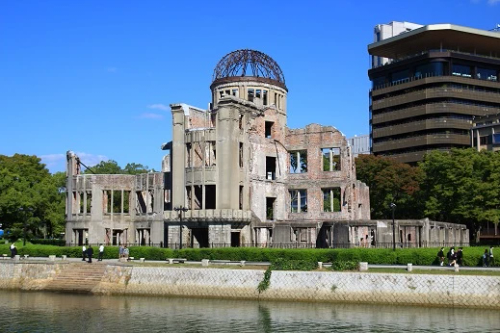
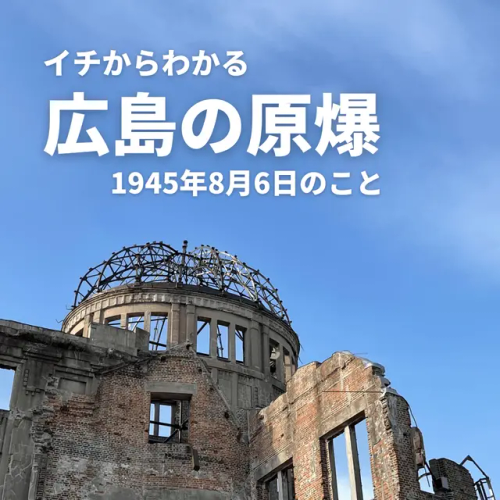

Sean bienvenidos, japonistasarqueologicos a una nueva entrega de historia nipona en la que os pongo imágenes de los epicentros tras los bombardeos del 6 y 9 de agosto, una vez dicho esto pónganse cómodos que empezamos. - Antes que nada me gustaría poner un poco de contexto histórico para poder entender la situación, Japón estaba perdiendo la guerra y estaban buscando formas desesperadas para frenar el avance norteamericano que se cernía sobre el país del sol naciente. Recurrirán a los kamikazes vía aérea y terrestre de hecho se estaba preparando en Japón unas fuerzas de defensa con mujeres, tras la batalla de Okinawa en los 82 días de combate murieron cerca de 100.000 soldados japoneses, más de 12.000 estadounidenses y al menos 100.000 civiles locales, incluidos cientos que fueron obligados a matarse a sí mismo, también se perdería el Yamato en el último kamikaze. - Ciudad de Hiroshima:6 de agosto 1945, Little Boy fue arrojado desde el Enola Gay, matando a más de 70.000 personas al instante y muchas más morirían consecuencia de la radiación. Ciudad de Nagasaki: 9 de agosto 1945, Fat Man, fue la otra bomba atómica lanzada por el mismo avión, causando la muerte de 49.000 personas el día de la explosión. - Conclusión: Los costos fueron terribles, ya que las propias consecuencias lo fueron aún más, espero que no se tengan más bombas atómicas, ni de cualquier otro tipo, el ser humano debería aprender de los errores de la historia para que se acabaran las guerras. Publicación en memoria de todos los que murieron por las bombas atómicas. - Esperó que os haya gustado y nos vemos en próximas publicaciones que pasen una buena semana. - 日本の考古学者の皆さん、ようこそ日本史の新連載へ。8月6日と9日の原爆投下後の爆心地の画像をお届けします。 - まず最初に、この状況を理解するために歴史的背景を説明したいと思う。日本は戦争に負け、日出ずる国に迫りつつあったアメリカの進撃を食い止めるための絶望的な方法を模索していた。沖縄戦の後、82日間の戦闘で10万人近くの日本兵が死に、1万2000人以上のアメリカ兵と、自殺を余儀なくされた数百人を含む少なくとも10万人の民間人が亡くなった。 - 広島市:1945年8月6日、エノラ・ゲイからリトルボーイが投下され、7万人以上が即死。長崎市:1945年8月9日、ファットマンが同じ飛行機から投下され、爆発当日に49,000人が死亡した。 - 結論:原爆投下は、その結果そのものもさることながら、その代償もまた恐ろしいものであった。 私は、原爆や他のいかなる種類の爆弾もこれ以上投下されないことを願うとともに、人類が歴史の過ちから学び、戦争がなくなることを願っている。原爆で亡くなられたすべての方々を悼んで。 - お気に召していただけたなら幸いである。 良い一週間を. - Welcome, Japanese archaeologists, to a new instalment of Japanese history in which I bring you images of the epicentres after the bombings of 6 and 9 August, so make yourselves comfortable and let's get started. - First of all I would like to give some historical context to understand the situation, Japan was losing the war and they were looking for desperate ways to stop the American advance that was looming over the land of the rising sun. They resorted to kamikazes by air and land in fact they were preparing in Japan a defence force with women, after the battle of Okinawa in the 82 days of combat nearly 100,000 Japanese soldiers died, more than 12,000 Americans and at least 100,000 local civilians, including hundreds who were forced to kill themselves, they would also lose the Yamato in the last kamikaze. - Hiroshima City: 6 August 1945, Little Boy was dropped from the Enola Gay, killing over 70,000 people instantly and many more would die from radiation. Nagasaki City: 9 August 1945, Fat Man, was the other atomic bomb dropped from the same plane, killing 49,000 people on the day of the explosion. - Conclusion: The costs were terrible, as the consequences themselves were even more so. I hope that there will be no more atomic bombs, or any other type of bomb, and that mankind should learn from the mistakes of history so that wars will end. Publication in memory of all those who were killed by atomic bombs. - I hope you liked it and see you in future publications. Have a good week.





Sean bienvenidos japonistasarqueológicos, una nueva entrega en esta ocasión hablaremos del Tanabata una vez dicho esto pónganse cómodos que empezamos. - ¿Qué es el tanabata?¿Cuándo se celebra?¿Cuál es su origen?El tanabata, surge en China en la dinastía Han que posteriormente llegará a Japón durante el período Nara (710 d.C.- 794 d.C.) a través de la nobleza ,pero no fue hasta el período Edo (1600-1868) que se hizo popular. Esto lo podemos ver en el anime como es el caso de Doraemon (ドラえもん), pero hay montones de animes que tratan esta temática una película que trata estos temas podrían ser: Amor de Gata, Kimi no Nawa, Kimetsu no Yaiba podría hacer una lista que nunca acabaria de la cantidad de anime que hay que trata el Tanabata. ¿Qué es el tanabata? Cuenta la leyenda de Orihime y Hikoboshi que solo se pueden ver la séptima luna del séptimo mes, se crea un puente que les permite cruzar y estar juntos ¿Cuándo se celebra? Se celebra el 7 de julio y lo más característico de esta festividad son los fuegos artificiales y en Tokyo por ejemplo: el templo Zojoji, pero cualquier templo lo podréis apreciar muy bien. tanzaku ¿En qué consiste? Se coloca un trozo de papel con tu deseo y se colocan en árboles de bambú. Para terminar me gustaría mencionar que hay una constelación que representa esta maravillosa historia. - Espero que os haya gustado y nos vemos en próximas publicaciones que pasen una buena semana. - ようこそ、日本の考古学者たちへ。今回は七夕についてお話します。 - 七夕とは何か、いつ祝うのか、その起源は? 七夕は中国の漢の時代に始まり、奈良時代に貴族を通じて日本に伝わった。 ドラえもんなどのアニメに見られるが、このテーマを扱ったアニメはたくさんある:七夕を扱ったアニメは枚挙にいとまがない。織姫と彦星は七夕の日にしか会えないという伝説がある。 いつ祝うの?月7日に行われます。このお祭りの最大の特徴は花火で、東京では増上寺が有名ですが、どこのお寺でもよく鑑賞できます。 短冊 短冊とはどんなものですか?願い事を書いた紙を竹に貼る。最後に、この素晴らしい物語を象徴する星座があることをお伝えしたい。 - それでは、また次の記事でお会いしましょう。
Welcome to the Japanese archaeologists, this time we are going to talk about Tanabata, so make yourselves comfortable and let's get started. - What is tanabata, when is it celebrated, what is its origin? Tanabata, which originated in China in the Han dynasty, later came to Japan during the Nara period (710 AD - 794 AD) through the nobility, but it was not until the Edo period (1600-1868) that it became popular. This can be seen in anime such as Doraemon (ドラえもん), but there are lots of anime that deal with this theme, a movie that deals with these themes could be: Love of Cat, Kimi no Nawa, Kimetsu no Yaiba I could make a list that would never end of the amount of anime out there that deals with Tanabata. what is tanabata? Legend has it that Orihime and Hikoboshi can only see each other on the seventh moon of the seventh month, a bridge is created that allows them to cross and be together. When is it celebrated? It is celebrated on the 7th of July and the most characteristic of this festivity are the fireworks and in Tokyo for example: the Zojoji temple, but you can appreciate it very well in any temple. tanzaku What does it consist of? You put a piece of paper with your wish on it and place it on bamboo trees. Finally, I would like to mention that there is a constellation that represents this wonderful story. - I hope you liked it and see you in the next posts have a nice week.






Sean bienvenidos, japonistasarqueológicos a una nueva entrega, en esta ocasión os voy a explicar que significa Tenshu y su relación en la arquitectura de los castillos japoneses, dicho esto pónganse cómodos que empezamos. - Seguramente que lo hemos visto alguna vez en el famoso videojuego Shogun 2, en alguna película, dorama o anime, ¿Cuál es su principal función? La podríamos definir como lugar de residencia del daimyō (だい みょう), ya que en Japón el concepto de castillo del que se tiene en Europa. Porque pasaron a ser sitio de residencia y el Tenshu era la estancia del daimyō, “Cuando se estableció el régimen Tokugawa y se promulgó la Ley One Castle One Castle en 1615 “(Keicho 20) a partir de entonces a cada daimyo se le permitió poseer un solo castillo y el Tenshu perdió su función. - Espero que os haya gustado y nos vemos en próximas publicaciones de historia y arqueología nipona que pasen una feliz semana. - Welcome, archeological japonistas to a new installment, in this occasion I will explain what Tenshu means and its relationship in the architecture of Japanese castles, having said that, make yourself comfortable that we started. - Surely we have ever seen it in the famous video game Shogun 2, in a movie, drama or anime, what is your main function? We could define it as the place of residence of the daimyō (だい みょう), since in Japan the concept of a castle is similar to that of Europe. Because they became a place of residence and the Tenshu was the stay of the daimyō, "When the Tokugawa regime was established and the Law One Castle One Castle in 1615 “(Keicho 20) thereafter to each daimyo was allowed to own only one castle and the tenshu lost its function. - I hope you liked it and see you in future publications of Japanese history and archeology have a happy week. - ようこそ、考古学ジャポニスタの新作へ。 天守の意味とその関係を説明します。 そうは言っても、日本の城の建築は快適です 私たちは始めました。 - 確かに有名なビデオゲームで見たことがあります 将軍2、映画・ドラマ・アニメでメインは? 関数? 大名(だい)の居住地と定義することができます。 みょう)、日本の城の概念はヨーロッパのそれと似ているからです。 彼らは居住地となり、天守は天守の滞在であったからです。 大名「徳川政権の成立と法制化の時」 1615年「一城一城」(慶長20年)以降、それぞれに 大名は一城しか所有できず、天守は機能を失った。
-
 lcc-ldv liked this · 3 months ago
lcc-ldv liked this · 3 months ago -
 uncertainty-darkness liked this · 4 months ago
uncertainty-darkness liked this · 4 months ago -
 autonomy1 liked this · 4 months ago
autonomy1 liked this · 4 months ago -
 momoyama7788 liked this · 6 months ago
momoyama7788 liked this · 6 months ago -
 34istanbyl liked this · 6 months ago
34istanbyl liked this · 6 months ago -
 christabelq liked this · 6 months ago
christabelq liked this · 6 months ago -
 burubonk liked this · 7 months ago
burubonk liked this · 7 months ago -
 matthew29992291799999920 liked this · 7 months ago
matthew29992291799999920 liked this · 7 months ago -
 alex--max liked this · 7 months ago
alex--max liked this · 7 months ago -
 jlmahmud liked this · 7 months ago
jlmahmud liked this · 7 months ago -
 babylon-iraq-baghdad liked this · 7 months ago
babylon-iraq-baghdad liked this · 7 months ago -
 rubens-valle liked this · 7 months ago
rubens-valle liked this · 7 months ago -
 gaiawatcher liked this · 7 months ago
gaiawatcher liked this · 7 months ago -
 ravensvalley liked this · 7 months ago
ravensvalley liked this · 7 months ago -
 2018full liked this · 7 months ago
2018full liked this · 7 months ago -
 charlie-mac-posts liked this · 7 months ago
charlie-mac-posts liked this · 7 months ago -
 max2050 liked this · 7 months ago
max2050 liked this · 7 months ago -
 waiting-eyez liked this · 7 months ago
waiting-eyez liked this · 7 months ago -
 enablesomething liked this · 7 months ago
enablesomething liked this · 7 months ago -
 aloneinthedark-eagle liked this · 7 months ago
aloneinthedark-eagle liked this · 7 months ago -
 01012180630 liked this · 7 months ago
01012180630 liked this · 7 months ago -
 nasserjb liked this · 7 months ago
nasserjb liked this · 7 months ago -
 zlukaszemprzezswiat liked this · 7 months ago
zlukaszemprzezswiat liked this · 7 months ago -
 j3337777 liked this · 7 months ago
j3337777 liked this · 7 months ago -
 mazeglider liked this · 7 months ago
mazeglider liked this · 7 months ago -
 michitakao liked this · 7 months ago
michitakao liked this · 7 months ago -
 gillesphotoarts liked this · 7 months ago
gillesphotoarts liked this · 7 months ago -
 da-da-sk liked this · 8 months ago
da-da-sk liked this · 8 months ago -
 asongpanda1 liked this · 8 months ago
asongpanda1 liked this · 8 months ago -
 paddy0121 liked this · 8 months ago
paddy0121 liked this · 8 months ago -
 vuonkhuya liked this · 8 months ago
vuonkhuya liked this · 8 months ago -
 rodolfo9999 liked this · 8 months ago
rodolfo9999 liked this · 8 months ago -
 likealotus liked this · 8 months ago
likealotus liked this · 8 months ago -
 rennane-renna liked this · 8 months ago
rennane-renna liked this · 8 months ago -
 northameicanblog liked this · 8 months ago
northameicanblog liked this · 8 months ago -
 thelcsdaily reblogged this · 8 months ago
thelcsdaily reblogged this · 8 months ago -
 thelcsdaily liked this · 8 months ago
thelcsdaily liked this · 8 months ago -
 japandreamscapes liked this · 8 months ago
japandreamscapes liked this · 8 months ago -
 mohamedbenjamaa liked this · 8 months ago
mohamedbenjamaa liked this · 8 months ago -
 some-places liked this · 8 months ago
some-places liked this · 8 months ago -
 vivencias-del-alma liked this · 8 months ago
vivencias-del-alma liked this · 8 months ago -
 meganecamera liked this · 8 months ago
meganecamera liked this · 8 months ago

238 posts